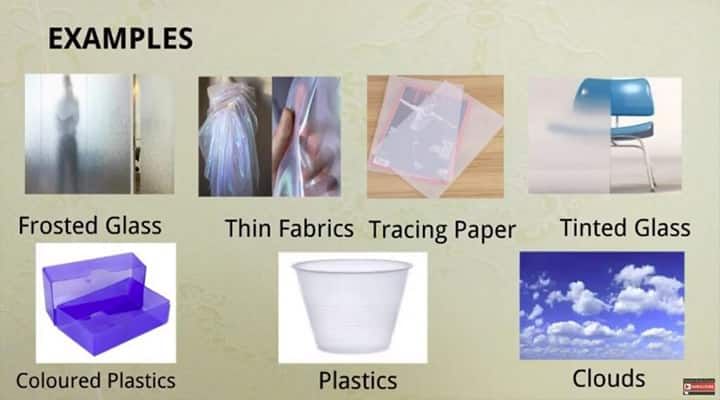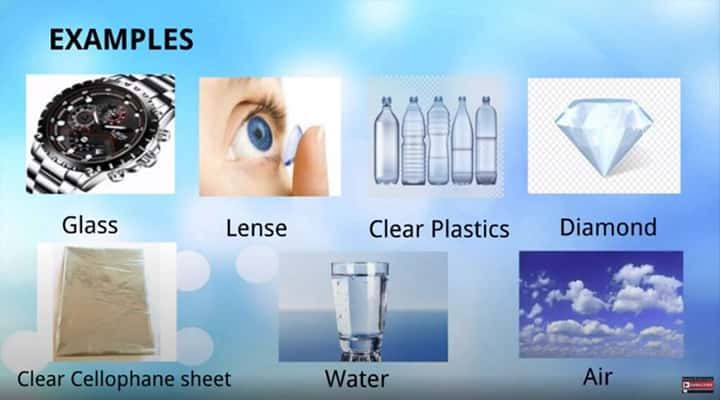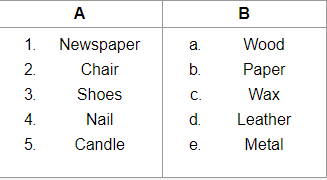Class 6 Science Chapter 2 Question Answers - Sorting Materials into Groups
Short Q & A:
Q1: Name five items which can be made of plastic.
Ans: Five items that can be made of plastic are plate, phone, pencil box, pen and chair.
Q2: Classify these objects as eatables or non eatables.
Sugar, apple, ball, pen, pot, grapes, chocolates
Ans: Eatables- sugar, apple, grapes and chocolates.
Non eatables-ball, pen and pot
Q3: Which of these objects are made of wood and which of them are made of paper?
Table, chair, newspaper, calendar, bullock cart, notebook
Ans: Objects made of wood- table, chair and bullock cart. Objects made of paper-newspaper, calendar and notebook.
Q4: Which of the following are shiny objects:
Wood, copper wire, paper, chalk, aluminium sheet, steel spoon
Ans: Copper wire, aluminium sheet and steel spoon are shiny objects.
Q5: What is the difference between soft and hard material?
Ans: Soft materials are those which can be compressed or scratched easily.
Q6: Why some materials lose their shine and appear dull?
Ans: Some materials often lose their shine and appear dull because of the action of air and moisture on them.
Q7: What types of substances are soluble in water? Give example.
Ans: Substances that completely disappear or dissolve in water are soluble in water. For example-salt, sugar etc.
Q8: What type of substances is called translucent?
Ans: The materials through which objects can be seen but not clearly are known as translucent. For example-oily patch on paper.
 Examples of translucent objects
Examples of translucent objects
Q9: Classify the following on the basis of float or sink in water: Leaf, key, apple, stone, paper
Ans: Float in water: leaf, paper
Sink in water: key, apple and stone.
Q10: Classify the following as transparent or translucent or opaque material : Cardboard, glass, water, oily paper, wood, stone, metal
Ans:
Transparent –glass, water.
Translucent-oily paper.
Opaque-cardboard, wood, stone, metal.
Q11: What do you mean by the term ‘transparent’?
Ans: Those substances or material, through which things can be seen are called transparent. For example-water, glass etc.
 Examples of transparent objectsQ12: Match the following :
Examples of transparent objectsQ12: Match the following :

Ans: 1-b,2-a,3-d,4-e,5-c
Q13: Find the odd one out:
1. Iron, wood, nail, cotton.
2. Sugar, salt, sand, milk
3. Copper, wood, aluminium, gold.
4. Table, chair, coin, bed
Ans: Cotton, sand, wood, coin.
Q14: What is the difference between transparent and translucent?
Ans: Those substances or material, through which things can be seen are called transparent. For example-water, glass etc. The materials through which objects can be seen but not clearly are known as translucent. For example-oily patch on paper, butter paper.
Long Q & A:
Q1: Why do we need to group materials?
Ans: Dividing materials into groups makes it easy to study their properties. It also helps to observe any pattern in these properties. For example: by placing similar types of objects together, we can locate them easily.
|
100 videos|261 docs|49 tests
|

|
Explore Courses for Class 6 exam
|

|


















